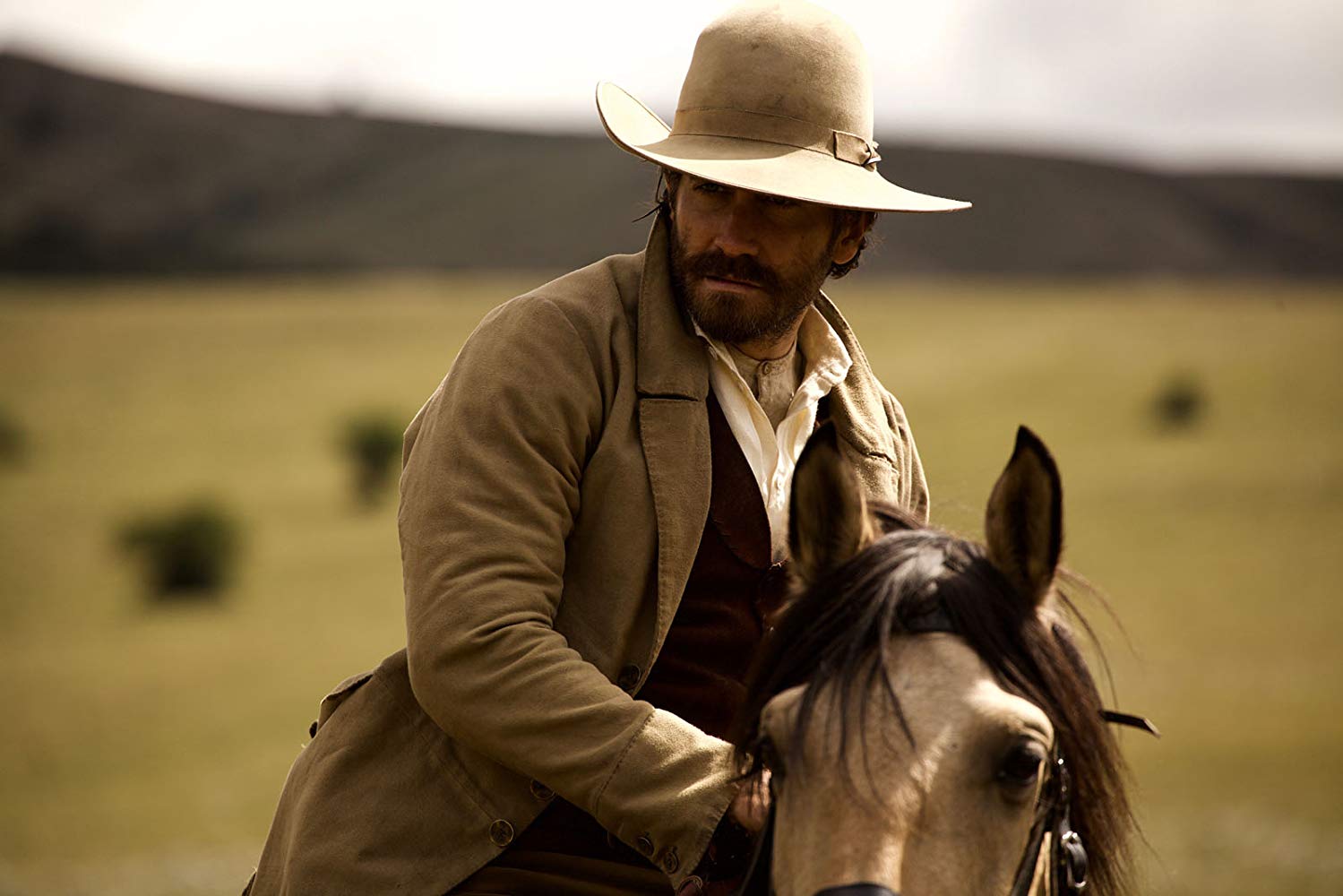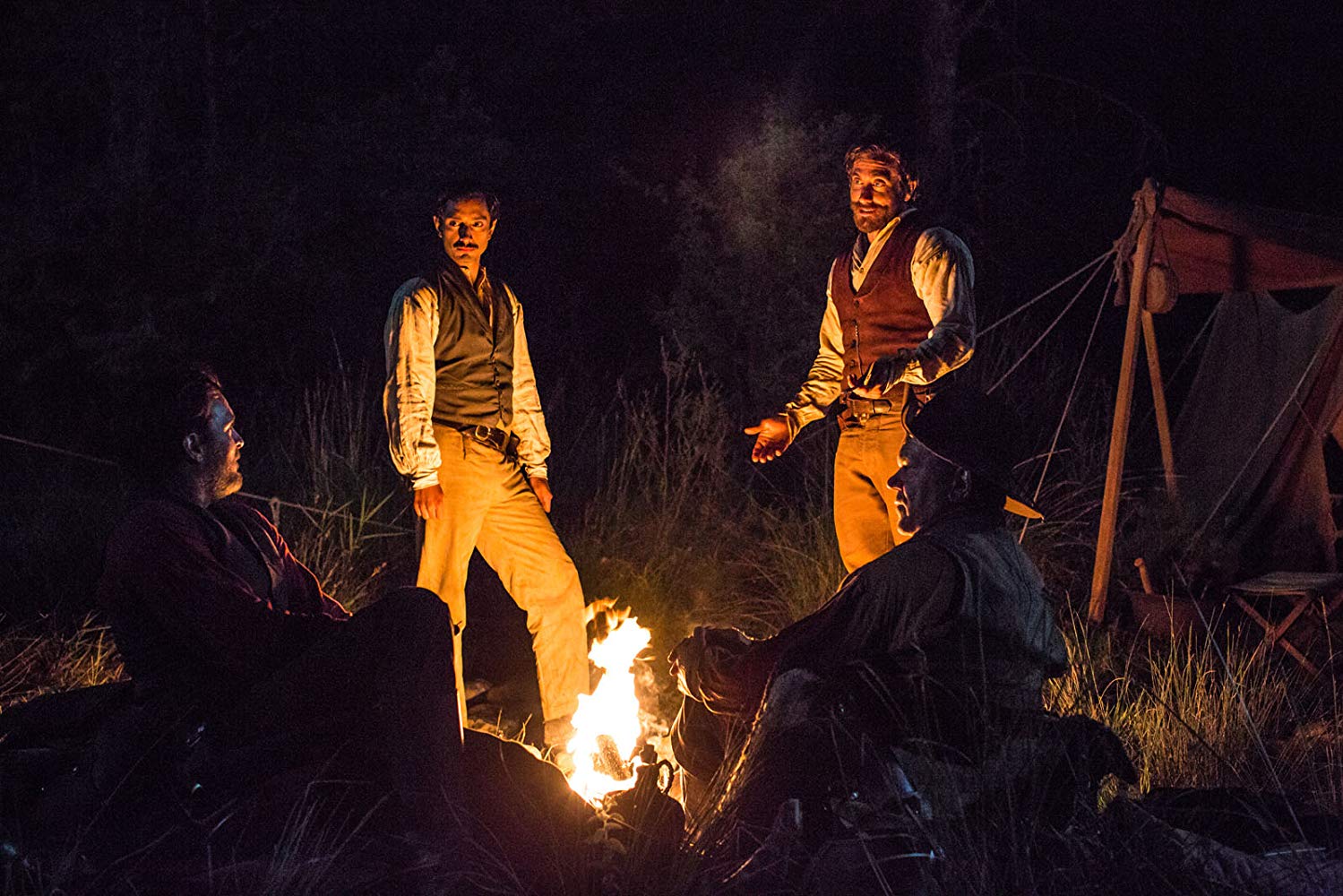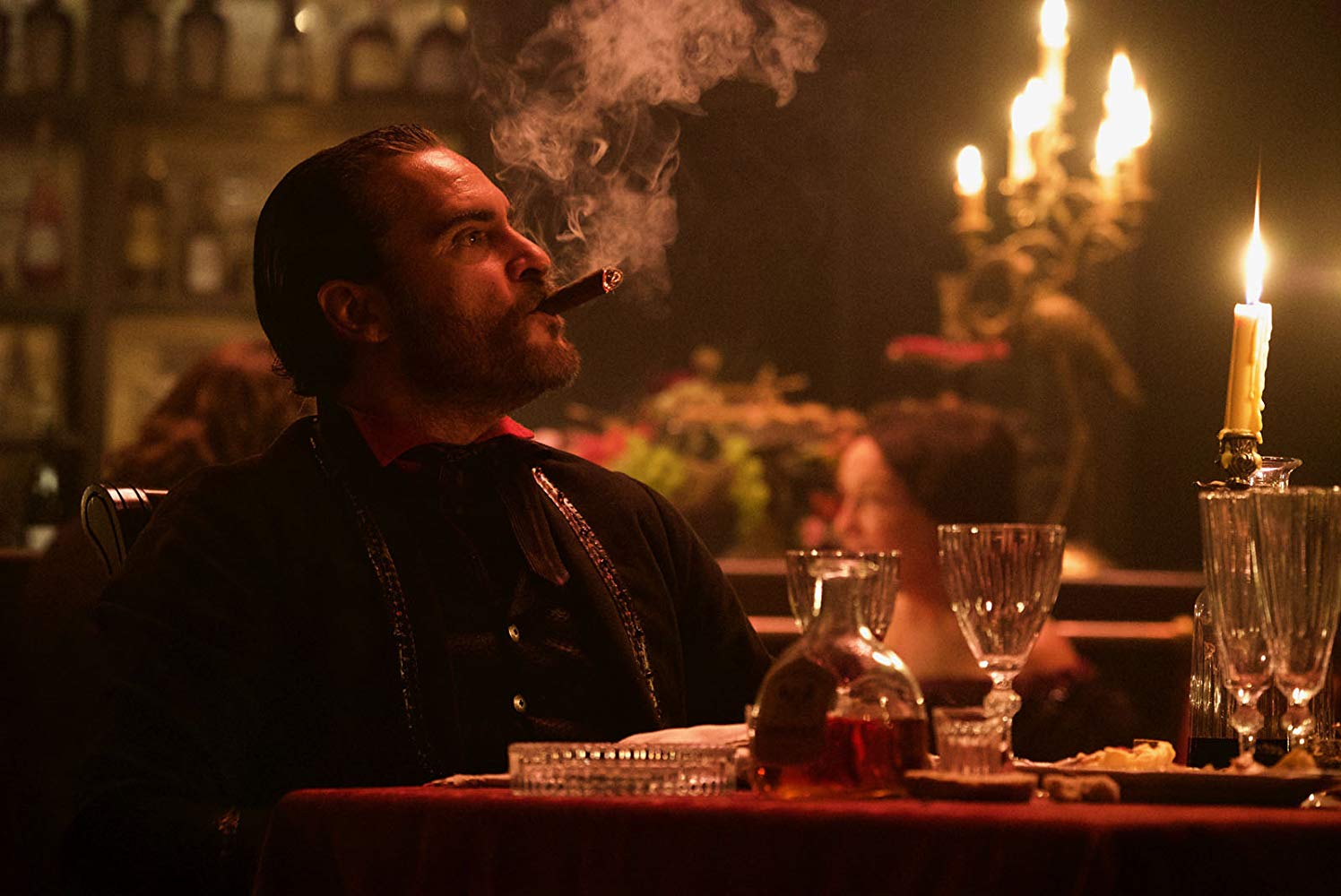Deep Focus: The Sisters Brothers

In The Sisters Brothers—a violent, whimsical, transfixing, and ultimately moving Western—frontier assassins Charlie and Eli Sisters, played with deadpan bravura by Joaquin Phoenix and John C. Reilly (respectively), are as droll as Reilly and Will Ferrell in Step Brothers. They’re odd-couple hit men: a sober gentle giant (Reilly’s Eli) and a seething alcoholic killer (Phoenix’s Charlie).
Phoenix, an old pro at inchoate turmoil, proves that he can be scary-funny, not just one or the other, especially when he toys with people who double-cross him or think they can give him the jitters. He brings spontaneous, imaginative energy to his threats, as when he moves his head to jangly music-box rhythms before telling a terrified boss-woman, “You’re not going to like what comes next.” Reilly is a master of marathon slow burns. He knows how to get laughs from frustration, notably when Eli hears a thud, turns around, and sees that Charlie is too hungover to stay on his horse. (Reilly’s next role sounds perfect: Oliver Hardy.) He’s also oddly poignant—a hopeful romantic who carries a lady’s gift of a red shawl to remind him of more tender emotions. Their personalities couldn’t be more different, but when the bullets fly, their brotherly instincts and crack shooting make them a lethal combination.
The movie begins as Charlie and Eli square off against a gang holed up in a farmhouse: we witness the slaughter in flashes of gunfire that cut through the jet-black night. The distanced gorgeous-ugly spectacle contrasts with the casual, up-close brutality of the brothers dispatching survivors an instant later. For a second or two the explosive “shock humor” of this juxtaposition makes us fear that we’re in for a series of hip, sadistic riffs on classic chases and shootouts. Then a string of horses, set ablaze, creates a hellish nightscape as they escape a burning barn. This potent, eerie image helps eliminate any notion that we know what’s coming.
As soon as we get a good look at them, Phoenix and Reilly generate a startling rapport that becomes the stuff of down-home and sometimes down-and-out tragicomedy. Charlie and Eli are as individually twisted and inextricably entwined as Jamie and Edmund in Long Day’s Journey Into Night. They must work through the psychic legacy of a substance-abusing parent on horseback, on the trail. By the end, the action is disarming in multiple ways. It contains beguiling episodes—Eli’s purchase and use of a toothbrush (the movie’s main symbol of progress)—and excruciating incidents of horror, like the amputation of a forearm.

In this visually rich Western, filmed in Spain and Romania, verdant ridges carry profiles as stark and geometric as desert buttes and mesas. Cities pop up quickly, like movie sets, except the facades have real buildings behind them and contain, instead of faceless extras, unpredictable cameo players who look as if they’d clambered out of tintypes. We experience the West not as a picturesque backdrop but as a brave, dangerous new world. After vivid depictions of callous cities and mining camps, the movie’s final vision of a modest, peaceful homestead comes as a roughhewn catharsis. The Sisters Brothers brings home the heroism of modest settlers more indelibly than sentimental family sagas.
Screenwriter Thomas Bidegain and the director, Jacques Audiard (A Prophet, Dheepan), have brilliantly adapted Patrick deWitt’s 2011 novel. They turn what could have been an arch picaresque narrative into a mock epic that grows more affecting and intense as it goes along. The essential plot remains the same. In 1851, the brothers’ employer, a mysterious Oregon City–based oligarch, the Commodore (Rutger Hauer), sends them to meet his trusty scout Morris (Jake Gyllenhaal), so he can guide them to their latest victim, an alleged thief with the classy moniker Hermann Kermit Warm (Riz Ahmed). The brothers stop in an actual boomtown (Jacksonville) and the claustrophobic fictional city of Mayfield, where everything is named for its hard-faced founder-owner (Rebecca Root). Then they move on to San Francisco—already Babylon by the Bay—before they take a pivotal dive into Gold Rush Country, which becomes an improbable setting for utopian daydreams.
How refreshing for the film of a prize-winning book to be irreverent in its adaptation. Audiard and Bidegain retain deWitt’s humorously formal dialogue but split the point of view between Eli and Morris, the Commodore’s most affable employee. Gyllenhaal taps into the screenplay’s pent-up yearnings and pulls off its moments of urbanity. His story arc varies the harsh, hard-riding action. But that’s not all. Audiard and Bidegain transform Morris and Warm, an inventor, into advocates for a civilized future, free of bullying and cutthroat rivalry. Their unexpected partnership puts the Sisters Brothers in sharp relief for getting stuck in a primal messed-up past and a barbaric present.

The filmmakers expand on Warm’s latest brainchild; for too much of the book it’s just a vague MacGuffin. Warm, a chemist by trade, has concocted a liquid that can illuminate gold through layers of earth or flowing water, eliminating the need for most digging and sifting. In the movie, he hopes to exploit his profits to establish an egalitarian community in Dallas. Audiard says in the press-kit interview, “We took real-life inspiration from the Saint-Simonians who migrated across the United States in the 19th century, European pre-socialists who were going to establish a new society.” This subplot wouldn’t work if it didn’t re-energize the characters. The actors make us believe that doing the Commodore’s dirty work has overextended Morris and the Sisters Brothers, physically and psychologically. And Ahmed is the ideal actor to play their change agent, Warm. He lends a dignified yet lyric note to Audiard’s high-flown conception of a smart and brave idealist. He beguiles the audience and his colleagues: we want to believe in the audacity of his hopes. We worry about Charlie’s capacity to evolve.
Audiard has conceived the film in tawny colors, streaked with sandy pinks and bits of green and red and gold. In the action set pieces, shot in a nimble tableau style, he and his cinematographer, Benoît Debie, emphasize the Sisters Brothers’ efficiency. So it comes as a satisfying jolt when they achieve folkloric glory, shooting it out with the Commodore’s posse as they race across the plains at full gallop. Just as thrilling are the jagged or distorted images that combine with Alexandre Desplat’s jazzy, percussive score to rival the nightmares of Jan Troell’s The New Land.
Audiard’s springy rhythms and tactile attention to the actors enable him to surmount a sketchy motivation or two (it took me a second to buy Morris’s leap of faith). He beautifully limns the shifting power balance and sympathies between the alpha male Charlie, who is, in the film, the younger Sisters, and the ruminative Eli. Like Thomas Berger’s Little Big Man (rather than Arthur Penn’s movie), The Sisters Brothers operates as a realistic tall tale—a yarn with multiple strands. They come together in a surpassingly delicate finale, with a fierce yet tremulous Carol Kane stealing her one scene as their mother. As the camera skates through Eli’s waking dream of domesticity, Audiard’s vision seals the film as a genuine slapstick-tragic odyssey.
As a novel, The Sisters Brothers was shortlisted for the Man Booker prize. This is not the kind of movie that typically wins awards, but for me it is even better than the book.
Michael Sragow is a contributing editor to Film Comment and writes its Deep Focus column. He is a member of the National Society of Film Critics and the Los Angeles Film Critics Association, and a contributor to the Criterion Collection.







